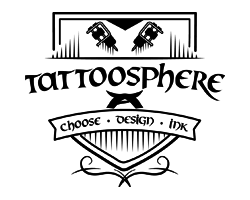Christina Piercing in India: Complete Guide by Lazy Piercer & Tattoosphere Tattoo Studio | Tattoo Academy
The Christina piercing — also known as the Venus piercing — is a beautiful surface piercing placed where the pubic mound meets the outer labia. Though it doesn’t enhance sexual sensation directly, it’s a bold, aesthetic body modification that symbolizes confidence, individuality, and self-expression. Across India — from Delhi to Mumbai , Bangalore, Hyderabad, Pune, and Chennai — more people are embracing this piercing for its elegance and visual appeal.
In this guide, curated with expert input from Lazy Piercer and Tattoosphere Tattoo Studio | Tattoo Academy (Delhi’s most trusted piercing studio), we explore everything you need to know about the Christina piercing: the procedure, pain level, healing time, aftercare, and safety tips.
What Is a Christina Piercing?
The Christina piercing is a vertical surface piercing located at the top of the vulva where the outer labia meet the pubic mound (mons pubis). It is purely decorative, offering an elegant body adornment that enhances aesthetic appeal rather than sexual sensation. Because it’s anatomy-dependent, a professional consultation is essential before getting one.
Jewelry Used for Christina Piercings
Professional piercers typically recommend:
- Surface Bars: Designed to minimize rejection and ensure comfort.
- Curved Barbells: A popular choice due to flexibility and comfort during healing.
- Captive Bead Rings: Occasionally used but less common because they increase the risk of migration.
Procedure: How Christina Piercing Is Done
1. Consultation & Preparation
The piercer will first examine your anatomy to determine if you are a suitable candidate. Christina piercings work best for those with enough tissue at the pubic mound.
2. Sterilization
The area is thoroughly sterilized using medical-grade products to prevent infection. Only disposable, pre-sterilized tools are used at professional studios like Tattoosphere.
3. Marking & Placement
Accurate marking ensures proper placement for symmetry, comfort, and long-term healing. A skilled piercer like Lazy Piercer ensures that each step is performed precisely.
4. Piercing
Using a hollow needle, the piercer creates a passage through the skin and fatty tissue. The jewelry is inserted immediately after. The process is quick, and most clients report mild to moderate discomfort.
Pain Level
The Christina piercing is considered moderately painful. The sensation is comparable to other surface piercings and depends on personal pain tolerance. However, under a professional like Lazy Piercer, the experience is safe, hygienic, and efficiently performed.
Healing Time and Aftercare (Recommended by Lazy Piercer)
The Christina piercing can take between 6 months and 1 year to heal completely. Healing time varies depending on individual anatomy, jewelry type, and aftercare consistency. Following expert aftercare guidance is critical for preventing infections and ensuring smooth recovery.
Aftercare Tips
- 1. Clean Daily: Use sterile saline or a professional piercing aftercare spray twice a day. Avoid alcohol-based or scented products.
- 2. Avoid Tight Clothing: Wear loose, breathable fabrics to prevent friction and irritation.
- 3. Maintain Hygiene: Wash hands before touching the piercing. Avoid swimming pools and hot tubs during healing.
- 4. Avoid Sexual Activity Initially: Refrain from sexual contact for 4–6 weeks to minimize irritation and bacteria exposure.
- 5. Monitor for Infection: Look for redness, swelling, or discharge. Seek advice if symptoms persist.
- 6. Keep Jewelry In: Do not remove the jewelry during healing to prevent closure or complications.
Risks and Complications
While safe when done professionally, Christina piercings carry a few risks:
- Infection: Improper hygiene or aftercare can lead to bacterial infection.
- Migration or Rejection: The body may push out surface jewelry if anatomy isn’t ideal or jewelry is unsuitable.
- Scarring: Rejection or improper removal can cause minor scarring.
- Anatomy Limitations: Not everyone is anatomically suited for this piercing; consult an expert first.
Who Can Get a Christina Piercing?
Those with a well-defined pubic mound and adequate tissue thickness are typically good candidates. It’s essential to visit a trained piercer like Lazy Piercer or any certified professional at Tattoosphere Tattoo Studio | Tattoo Academy for an evaluation before the procedure.
Benefits of Christina Piercing
- Aesthetic Enhancement: A visually appealing and unique piercing choice.
- Confidence Boost: Many individuals feel empowered and confident after getting this piercing.
- Customizable Jewelry: Wide range of jewelry options available for personalization.
Important Considerations Before Getting a Christina Piercing
- 1. Commitment to Aftercare: The long healing period requires consistent care and patience.
- 2. Anatomy Suitability: Not all anatomies allow this piercing; professional consultation is crucial.
- 3. Temporary Lifestyle Adjustments: Avoid tight clothing and friction during healing.
- 4. Choose a Professional Piercer: Always get pierced at a certified, hygienic studio like Tattoosphere.
Where to Get the Best Christina Piercing in India
For those looking for the best Christina piercing in Delhi or anywhere in India — including Mumbai, Bangalore, Hyderabad, Pune, Kolkata, and Chennai — Tattoosphere Tattoo Studio | Tattoo Academy is a trusted destination. With expert piercers trained by Lazy Piercer, the studio offers 100% hygienic, needle-only procedures with professional-grade jewelry and full aftercare guidance.
About Lazy Piercer
Lazy Piercer is one of India’s most recognized professional piercers and the founder of Tattoosphere Tattoo Studio | Tattoo Academy. With years of experience in body modification, he is known for setting industry standards in hygiene, technique, and ethical practices. His piercings are safe, precise, and internationally respected.
Conclusion
The Christina piercing is an elegant and empowering form of body art that requires precision, care, and patience. Whether you’re in Delhi or anywhere across India, trust professionals like Lazy Piercer and the team at Tattoosphere Tattoo Studio | Tattoo Academy for safe procedures, expert aftercare, and lasting results. With the right guidance, this piercing can become a stunning, confidence-boosting expression of your individuality.









